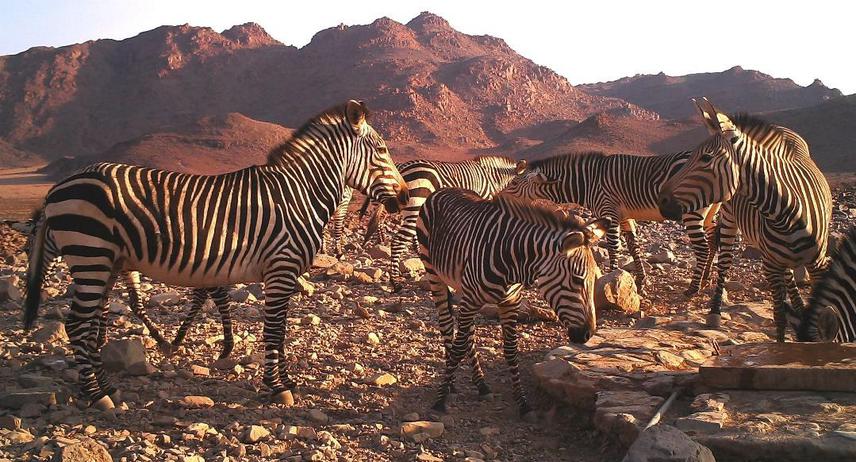Morris Gosling
Other projects
14 Sep 2006
Conservation of Hartmann's Mountain Zebra and their Nama Karoo Habitat in Namibia
30 Jul 2018
What Factors Limit Mountain Zebra Populations in Namibia and when is Intervention Necessary for Conservation Management?
The project aims to improve our understanding of mountain zebra populations, including their movements and limiting factors, and to promote sustainable conservation management.

The project aims to improve our knowledge of mountain zebra populations as an aid to sustainable conservation practice. It is carried out at five main study sites throughout Namibia and aims to help conservationists and landowners by providing scientifically-based information about mountain zebra on their land. The study is individual-based and animals are identified from photographs using a stripe coding system. This technique allows rapid identification of individual animals and, with appropriate sampling, can be used to obtain mark-recapture estimates of zebra populations. This approach can be used in inaccessible areas where other types of survey are difficult and can provide practical and novel information for conservation managers. Estimates also help distinguish between ‘source populations’ (the total that range widely and visit an area temporarily) and the animals present at any one time. These differences are crucial in this wide-ranging species and demonstrate the importance of area-wide conservation strategies.
The study also plays a role in monitoring mountain zebra movement within the new Greater Sossusvlei-Namib Landscape (GSNL) project, a landscape-scale conservation scheme based on the idea of fence removal to allow natural movements. The GSNL area contains three of the project study sites and these will be incorporated into an area-wide approach to monitor zebra populations. The GSNL focus is on non-consumptive use, ecotourism and low management intervention. A key outcome is to test the idea that these aims depend on free population movement.
The project also aims to achieve a better understanding of mountain zebra population dynamics including natural rates of increase and the role of the main limiting factors in different areas, including those where the main predators (lions and spotted hyenas) have been removed. This basic understanding will help underpin conservation management practice and thus the economic viability of wildlife areas on which local economies and people depend. Where off-take is needed, improved knowledge will help ensure sustainability. Hybridization with plains zebra has been demonstrated in Etosha NP and is potentially a major threat to the species. But is it natural or a result of human intervention? Research on hybridization in collaboration with local and international partners will help resolve this problem.